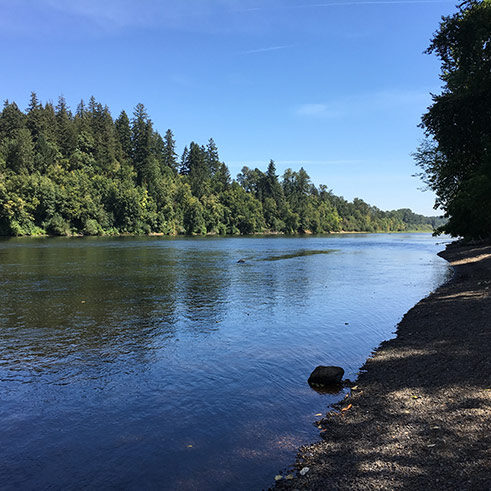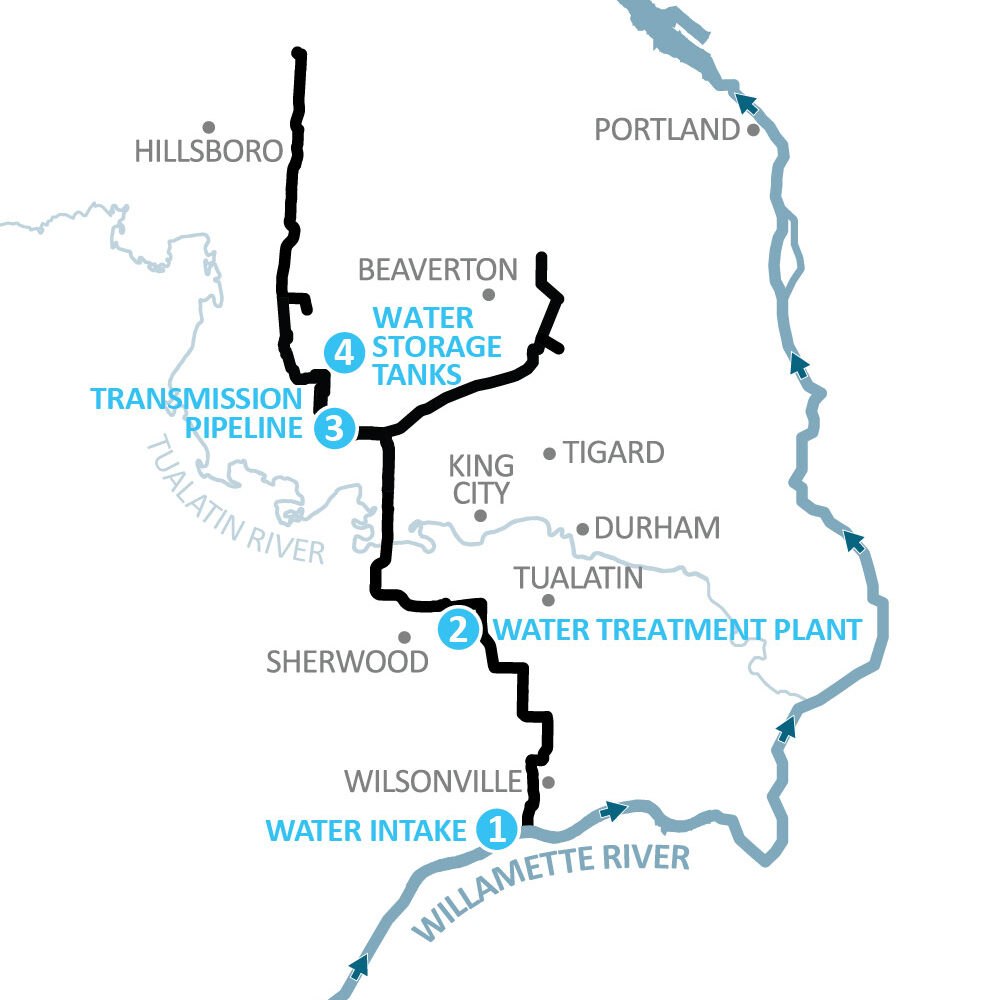
A $1.3 billion regional project scheduled for completion in 2026 will supply more for Hillsboro, be a backup source for Beaverton and enable the Tualatin Valley Water District to end purchases from Portland.
When the largest public works project in Washington County is completed seven years from now, it will draw millions of gallons from the Willamette River and deliver the water to Hillsboro, the Tualatin Valley Water District and Beaverton.
For Hillsboro, the Willamette Water Supply Program will mean more water for a growing city — development in South Hillsboro will add 20,000 more residents over 20 years — and for the expansion of Intel and other businesses.
For the Tualatin Valley Water District, whose customers live in unincorporated communities between Hillsboro and Beaverton, the program means a replacement source for water it now buys from Portland under agreements scheduled to end in 2026.
For Beaverton, the program means a new supplemental source of water that is less likely to be disrupted than its current deliveries from Hagg Lake if there is a severe earthquake off the Oregon coast.
Washington County itself forecasts 200,000 more people — the county’s current estimated tops 600,000 — by 2040.
The program manager and officials from the district, Beaverton and Hillsboro spoke about the project at a recent Washington County Public Affairs Forum.
In its simplest form, the project will require a new intake on the Willamette near Wilsonville and a 66-inch pipe for the water to reach a new treatment plant near Sherwood. (Wilsonville and Sherwood already draw water from the Willamette.)
More pipes will carry the water to two reservoirs, each 15 million gallons, on Cooper Mountain — and pipes will bring water to municipal systems in Beaverton, the district and Hillsboro.
Federal boost
Federal loans to the district and Hillsboro, announced by the Environmental Protection Agency earlier this year, will amount to $640 million of the overall $1.3 billion project. Their water customers will repay those loans starting in 2026, once the project is completed.
“A lower cost will mean a lower impact on rates, and we will have excellent water quality from this supply,” said Dave Kraska, the program manager.
District customers will save $135 million, and Hillsboro customers $125 million over the 35-year duration of loans, said Tom Hickmann, TVWD chief executive officer since July. For his customers, he said, the savings will be about $20 on a monthly bill.
“But water rates are going up for us to afford the new infrastructure,” said Hickmann, formerly city engineer in Bend.
Beaverton, which officially joined the program in July, will not be liable for loan repayments. But city water customers will pay for their shares of the new source through higher water bills. The same applies to other cities that may join the program in the future.
No public election was required because no property taxes are being levied for the program.
Kraska said Hillsboro and the district conducted their own studies about where to get future water supplies, but drew the same conclusion that drawing from the Willamette would be the cheaper of several alternatives.
Others were increased capacity of Hagg Lake through a strengthened or relocated Scoggins Dam — the U.S. Bureau of Reclamation is scheduled to recommend a preferred alternative early next year for seismic safety — development of groundwater sources near Sauvie Island, or purchases of water from Portland’s Bull Run watershed.
Once Hillsboro and TVWD agreed, Kraska said the joint program was formed.
Regional benefits
Beaverton Mayor Denny Doyle said his city would draw up to 5 million gallons daily through the project once it is completed in 2026. (The regional intake is estimated at 60 million gallons daily.)
“i think this is a great example of what we can do when we work together. It forces us to the table to talk about regional issues and the ways we solve problems,” Doyle said.
“More water from different sources enhances our ability to respond to changing conditions.”
Doyle said he estimates city participation in the regional program will ultimately cost between $50 million and $55 million, payable by water customers.
The federal loans to TVWD and Hillsboro came under a program sponsored in 2014 by U.S. Sen. Jeff Merkley, D-Ore., and included in a law signed in December 2016. Merkley said he did so at the request of Oregon local governments that could not find low-interest loans for water projects.
“This law has been a big positive change in that direction,” TVWD’s Hickman said. “These kinds of investments in infrastructure create jobs today … and for tomorrow.”
Niki Iverson, Hillsboro water manager, said the $1.3 billion project is split up so that contractors from Oregon and Washington will have the ability to bid.
“This enables our local contractors to be able to bid on projects and be competitive,” she said. “We wanted to avoid a situation where large national firms were going to come in and construct the entire project.”
So far, Iverson said, 96% of the $118 million spent to date has gone to local construction labor and materials.
Some pipe work already has been done in connection with road projects: Kinsman Road in Wilsonville; 124th Avenue between Tualatin and Sherwood, by Washington County, and South Hillsboro south of Tualatin Valley Hillsboro near Cornelius Pass Road.
“As much as we could, we scheduled much of our work to align with these other projects to save costs and reduce public impacts,” Kraska said.
But the program involves more than 30 miles of new pipes, so Kraska said there will be traffic delays when that work proceeds.
Before any of the new water from the Willamette is delivered, experts will have to test the mix. Kraska said water quality integration is necessary when water is mixed from several sources.
“We are evaluating the impact of bringing in these new supplies into the existing system and making sure we are properly prepared,” he said.










